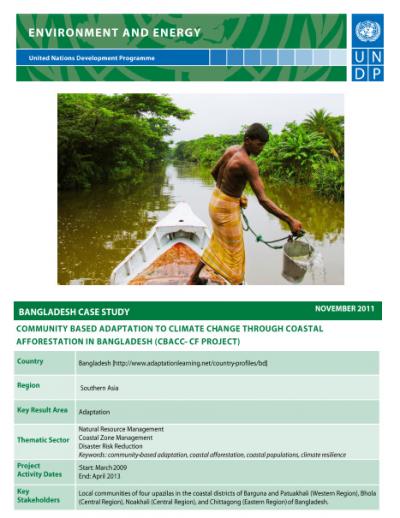UNDP-ALM Case Study: Bangladesh (November 2011)

ABSTRACT: In Bangladesh, many communities are situated close to the shoreline and are reliant on agriculture and fishing for their livelihoods. Rising sea levels and changes in the frequency and intensity of tropical cyclones are raising the incidences and severity of flooding, salt water intrusion and erosion, not to mention loss of livelihoods, shelter and life. Given these circumstances, the Government of Bangladesh is implementing a project to reduce the vulnerability of communities in five coastal districts most susceptible to the effects of climate change. In partnership with the Government of Bangladesh, the United Nations Development Programme (UNDP) is working to enhance the resilience of coastal communities as well as introduce new options for income generation. The project has adopted a successful community-based adaptation intervention known as the ‘Forest, Fish, and Fruit’ (FFF) model. By planting protective and productive vegetation, with an elevated mound and ditch structure interspersed with fish nursery ponds, the FFF model not only provides additional sources of income, but has also established a ‘green shield’ surrounding some of Bangladesh’s most vulnerable communities. 14,350 households in the target districts have been able to use this model to manage and protect their natural capital in a changing climate. Funded by the Global Environment Facility’s Least Developed Countries Fund (GEF-LDCF), this project is establishing protective ecosystems and increasing local government and community resilience and capacity to systematically identify and address risks in changing weather patterns and other climate-related issues.